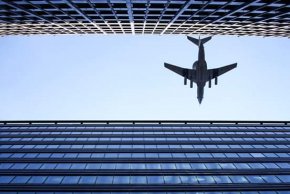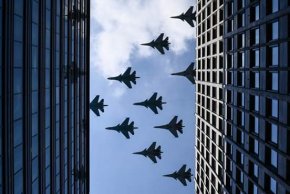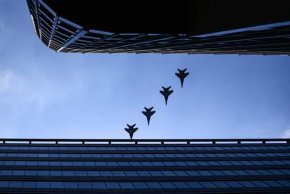Russian Air Force News & Discussion
- Thread starter Haavarla
- Start date
This appears to be the plan. The Su-34M appears to be delayed. Stopping and restarting production is expensive, disruptive, and the VVS needs more Su-34s, the sooner the better. They still have about a hundred Su-24Ms flying around, and there's a good chance that some Su-34s will go to the AVMF for maritime strike roles.So from which i undrrstand, the production of the 20 normal Su-34 from the contract of 8 june will be done before the production of the order of 76 Su-34M.

Russia’s top brass inks deal on 20 Su-34 frontline bombers
The contract involves standard Su-34 aircraft with certain alterations based on the experience of the operation of several dozen bombers of this type earlier purchased for the troops, according to a TASS source in the domestic defense industrytass.com
The plans were originally were to hand over the first aircraft at the end of last year, the second this year, and 2 more in 2021, with another 76 to follow. The first 4 would probably go to GLITs, and the next 4 to the TsBP in Lipetsk. So, best case scenario, with current plans, the first squadron will see IOC in ~2023. It's too soon to tell whether this timetable has been set back significantly, a little, or not at all.Is there any news about Su-57? It seems the crash towards the end of last year really set it back.
The COVID situation doesn't help either. Su-57 delivery is probably gonna be delayed by years at the very least.The plans were originally were to hand over the first aircraft at the end of last year, the second this year, and 2 more in 2021, with another 76 to follow. The first 4 would probably go to GLITs, and the next 4 to the TsBP in Lipetsk. So, best case scenario, with current plans, the first squadron will see IOC in ~2023. It's too soon to tell whether this timetable has been set back significantly, a little, or not at all.
If years are the least, what is the most? Decades? I suspect we may see the program pushed back a year, give or take. Production plans for 2020-2022 were modest to begin with, so I don't see why it wouldn't be possible to complete them. If we do see a delay beyond that I suspect it will have less to do with the crash or COVID and more to do with the MoD once again adjusting requirements or asking for more stuff to be integrated/added.The COVID situation doesn't help either. Su-57 delivery is probably gonna be delayed by years at the very least.
Update.
A new hypersonic missile, unrelated to the X-32, is undergoing trials on the Tu-22M3, meant eventually for the Tu-22M3M. It's possible that this is an airlaunched Tsirkon. Trials of the X-32 are also continuing.

 bmpd.livejournal.com
bmpd.livejournal.com

Some footage of the Su-57 undergoing trials with weapons on external mounts.

A drawing suggesting how the Su-57 might carry cruise missiles internally.

Work is continuing on the second phase of the Su-57 development, with trials to begin summer of 2022.

 bmpd.livejournal.com
bmpd.livejournal.com
The first PAK-DA prototype is under construction. It remains to be seen how this program goes.

 bmpd.livejournal.com
bmpd.livejournal.com
The Il-76MD-90A contract has been re-negotiated. The contract was plagued with troubles from the get go. It started as one contract for 41 aircraft, later brought down to 39, at the same total price. So far 6 have been delivered, and only 7 more will be delivered under the old terms, with 14 more under new terms. This brings total numbers down to 27 aircraft. The VVS doesn't really want the type too much, as there are plenty of Il-76 airframes in storage.

 bmpd.livejournal.com
bmpd.livejournal.com
An upgraded L-39 has been delivered to the VVS. This raises questions about future plans. YAK-130 production has gone on at a good pace, and though the type is expensive, over 100 have been bought, and more are contracted. It's unclear why they would want to retain the L-39.

 bmpd.livejournal.com
bmpd.livejournal.com
New contracts have been signed for continued deliveries of the S-350 and S-400, 3 regiments of S-400s and 4 "systems" (btlns) of S-350s (so ~2 regiments).

 bmpd.livejournal.com
bmpd.livejournal.com
Also a contract for the first pair of Ka-52Ms, and their trials.

 bmpd.livejournal.com
bmpd.livejournal.com
Some information on the new LMUR guided missiles, used on the Mi-28N. The type, also known as Izdelie 305, is expected to be used by both the Mi-28N and the Ka-52M, with trials on the Ka-52M to begin in 2022, after the prototypes are built.


 vz.ru
vz.ru
The Altair-U heavy UAV flying with dummy bombs.

There was earlier information the Su-30SM will get an engine standardized with the Su-35S, now there is information that a standardized Flanker engine is being developed to fit on all Flankers, though there is some question as to how well it will work between the Su-35 and the older aircraft.

 bmpd.livejournal.com
bmpd.livejournal.com
A new hypersonic missile, unrelated to the X-32, is undergoing trials on the Tu-22M3, meant eventually for the Tu-22M3M. It's possible that this is an airlaunched Tsirkon. Trials of the X-32 are also continuing.
Испытания новой гиперзвуковой авиационной ракеты с бомбардировщика Ту-22М3
Как сообщило 11 мая 2020 года информационное агентство ТАСС, испытания новой гиперзвуковой авиационной ракеты проведены недавно в России с борта бомбардировщика-ракетоносца Ту-22М3. Ракета создается для модернизированной версии самолета Ту-22М3М, сообщил ТАСС источник в оборонно-промышленном…
 bmpd.livejournal.com
bmpd.livejournal.com

Some footage of the Su-57 undergoing trials with weapons on external mounts.

A drawing suggesting how the Su-57 might carry cruise missiles internally.

Work is continuing on the second phase of the Su-57 development, with trials to begin summer of 2022.
Планы работ по истребителю Су-57 «второго этапа»
Газета Известия в материале А нтона Лаврова и Романа Крецула Выйдет Супер-Сухим: истребитель Су-57 ожидает модернизация. Планы обновления российского самолета пятого поколения сформированы еще до принятия его на вооружение сообщает, что испытания первого…
 bmpd.livejournal.com
bmpd.livejournal.com
The first PAK-DA prototype is under construction. It remains to be seen how this program goes.
Начата постройка первого опытного образца бомбардировщика по программе ПАК ДА
Как сообщило 26 мая 2020 года информационное агентство ТАСС , Россия начала постройку первого опытного образца стратегического стелс-бомбардировщика в рамках программы Перспективный авиационный комплекс дальней авиации (ПАК ДА, Изделие 80). Об этом сообщили ТАСС два…
 bmpd.livejournal.com
bmpd.livejournal.com
The Il-76MD-90A contract has been re-negotiated. The contract was plagued with troubles from the get go. It started as one contract for 41 aircraft, later brought down to 39, at the same total price. So far 6 have been delivered, and only 7 more will be delivered under the old terms, with 14 more under new terms. This brings total numbers down to 27 aircraft. The VVS doesn't really want the type too much, as there are plenty of Il-76 airframes in storage.
Контракт на поставку самолетов Ил-76МД-90А перезаключен
Как сообщает газета Коммерсантъ в материале Германа Костринского Минобороны переоценило транспортные самолеты. Ведомство смягчило условия контракта на поставку Ил-76МД-90А , Министерство обороны Российской Федерации на новых условиях заключило с ульяновским заводом…
An upgraded L-39 has been delivered to the VVS. This raises questions about future plans. YAK-130 production has gone on at a good pace, and though the type is expensive, over 100 have been bought, and more are contracted. It's unclear why they would want to retain the L-39.
Первый образец модернизированного на ЭМЗ им. В. М. Мясищева учебно-тренировочного самолета L-39
Как сообщило 4 июня 2020 года ПАО Объединенная авиастроительная корпорация (ПАО ОАК) в АО ЭМЗ им. В. М. Мясищева (входит в Дивизион транспортной авиации ПАО ОАК в составе Госкорпорации Ростех) завершаются работы по модернизации основного…
New contracts have been signed for continued deliveries of the S-350 and S-400, 3 regiments of S-400s and 4 "systems" (btlns) of S-350s (so ~2 regiments).
Подписаны новые контракты на зенитные ракетные системы С-350 и С-400
Как сообщило 9 июня 2020 года информационное агентство РИА Новости , АО Концерн ВКО Алмаз-Антей и Министерство обороны Российской Федерации заключили контракты на поставку трех полков зенитной ракетной системы С-400 Триумф и четырех комплектов ЗРС С-350…
Also a contract for the first pair of Ka-52Ms, and their trials.
Контракт на изготовление и испытания двух опытных образцов вертолета Ка-52М
Как сообщило 11 июня 2020 года информационное агентство Интерфакс, АО Вертолёты России к концу 2022 года завершит разработку и испытания опытных образцов модернизированного боевого вертолета Ка-52М Аллигатор с новым вооружением, следует из материалов портала…
 bmpd.livejournal.com
bmpd.livejournal.com
Some information on the new LMUR guided missiles, used on the Mi-28N. The type, also known as Izdelie 305, is expected to be used by both the Mi-28N and the Ka-52M, with trials on the Ka-52M to begin in 2022, after the prototypes are built.


Названы сроки завершения испытаний Ка-52 с дальнобойной крылатой ракетой
Модернизированный боевой вертолет Ка-52М, вооруженный новой дальнобойной крылатой ракетой «изделие 305», должен завершить государственные испытания к октябрю 2022 года, говорится в материалах, размещенных на сайте госзакупок.
The Altair-U heavy UAV flying with dummy bombs.

There was earlier information the Su-30SM will get an engine standardized with the Su-35S, now there is information that a standardized Flanker engine is being developed to fit on all Flankers, though there is some question as to how well it will work between the Su-35 and the older aircraft.
Разработка унифицированного двигателя для истребителей «Су»
Как сообщает газета Коммерсантъ в материале Ольги Никитиной Истребителям дадут тягу. ОДК разрабатывает унифицированный двигатель для Су, Объединенная двигателестроительная корпорация (входит в Ростех) разрабатывает унифицированный двигатель для…
Sandhi Yudha
Well-Known Member
In 2017 we have already seen a Su-57 prototype performing a 3200 km ferry flight.Update.
A new hypersonic missile, unrelated to the X-32, is undergoing trials on the Tu-22M3, meant eventually for the Tu-22M3M. It's possible that this is an airlaunched Tsirkon. Trials of the X-32 are also continuing.

Испытания новой гиперзвуковой авиационной ракеты с бомбардировщика Ту-22М3
Как сообщило 11 мая 2020 года информационное агентство ТАСС, испытания новой гиперзвуковой авиационной ракеты проведены недавно в России с борта бомбардировщика-ракетоносца Ту-22М3. Ракета создается для модернизированной версии самолета Ту-22М3М, сообщил ТАСС источник в оборонно-промышленном…bmpd.livejournal.com

Some footage of the Su-57 undergoing trials with weapons on external mounts.

A drawing suggesting how the Su-57 might carry cruise missiles internally.

Work is continuing on the second phase of the Su-57 development, with trials to begin summer of 2022.

Планы работ по истребителю Су-57 «второго этапа»
Газета Известия в материале А нтона Лаврова и Романа Крецула Выйдет Супер-Сухим: истребитель Су-57 ожидает модернизация. Планы обновления российского самолета пятого поколения сформированы еще до принятия его на вооружение сообщает, что испытания первого…bmpd.livejournal.com
The first PAK-DA prototype is under construction. It remains to be seen how this program goes.

Начата постройка первого опытного образца бомбардировщика по программе ПАК ДА
Как сообщило 26 мая 2020 года информационное агентство ТАСС , Россия начала постройку первого опытного образца стратегического стелс-бомбардировщика в рамках программы Перспективный авиационный комплекс дальней авиации (ПАК ДА, Изделие 80). Об этом сообщили ТАСС два…bmpd.livejournal.com
The Il-76MD-90A contract has been re-negotiated. The contract was plagued with troubles from the get go. It started as one contract for 41 aircraft, later brought down to 39, at the same total price. So far 6 have been delivered, and only 7 more will be delivered under the old terms, with 14 more under new terms. This brings total numbers down to 27 aircraft. The VVS doesn't really want the type too much, as there are plenty of Il-76 airframes in storage.

Контракт на поставку самолетов Ил-76МД-90А перезаключен
Как сообщает газета Коммерсантъ в материале Германа Костринского Минобороны переоценило транспортные самолеты. Ведомство смягчило условия контракта на поставку Ил-76МД-90А , Министерство обороны Российской Федерации на новых условиях заключило с ульяновским заводом…bmpd.livejournal.com
An upgraded L-39 has been delivered to the VVS. This raises questions about future plans. YAK-130 production has gone on at a good pace, and though the type is expensive, over 100 have been bought, and more are contracted. It's unclear why they would want to retain the L-39.

Первый образец модернизированного на ЭМЗ им. В. М. Мясищева учебно-тренировочного самолета L-39
Как сообщило 4 июня 2020 года ПАО Объединенная авиастроительная корпорация (ПАО ОАК) в АО ЭМЗ им. В. М. Мясищева (входит в Дивизион транспортной авиации ПАО ОАК в составе Госкорпорации Ростех) завершаются работы по модернизации основного…bmpd.livejournal.com
New contracts have been signed for continued deliveries of the S-350 and S-400, 3 regiments of S-400s and 4 "systems" (btlns) of S-350s (so ~2 regiments).

Подписаны новые контракты на зенитные ракетные системы С-350 и С-400
Как сообщило 9 июня 2020 года информационное агентство РИА Новости , АО Концерн ВКО Алмаз-Антей и Министерство обороны Российской Федерации заключили контракты на поставку трех полков зенитной ракетной системы С-400 Триумф и четырех комплектов ЗРС С-350…bmpd.livejournal.com
Also a contract for the first pair of Ka-52Ms, and their trials.

Контракт на изготовление и испытания двух опытных образцов вертолета Ка-52М
Как сообщило 11 июня 2020 года информационное агентство Интерфакс, АО Вертолёты России к концу 2022 года завершит разработку и испытания опытных образцов модернизированного боевого вертолета Ка-52М Аллигатор с новым вооружением, следует из материалов портала…bmpd.livejournal.com
Some information on the new LMUR guided missiles, used on the Mi-28N. The type, also known as Izdelie 305, is expected to be used by both the Mi-28N and the Ka-52M, with trials on the Ka-52M to begin in 2022, after the prototypes are built.


Названы сроки завершения испытаний Ка-52 с дальнобойной крылатой ракетой
Модернизированный боевой вертолет Ка-52М, вооруженный новой дальнобойной крылатой ракетой «изделие 305», должен завершить государственные испытания к октябрю 2022 года, говорится в материалах, размещенных на сайте госзакупок.vz.ru
The Altair-U heavy UAV flying with dummy bombs.

There was earlier information the Su-30SM will get an engine standardized with the Su-35S, now there is information that a standardized Flanker engine is being developed to fit on all Flankers, though there is some question as to how well it will work between the Su-35 and the older aircraft.

Разработка унифицированного двигателя для истребителей «Су»
Как сообщает газета Коммерсантъ в материале Ольги Никитиной Истребителям дадут тягу. ОДК разрабатывает унифицированный двигатель для Су, Объединенная двигателестроительная корпорация (входит в Ростех) разрабатывает унифицированный двигатель для…bmpd.livejournal.com
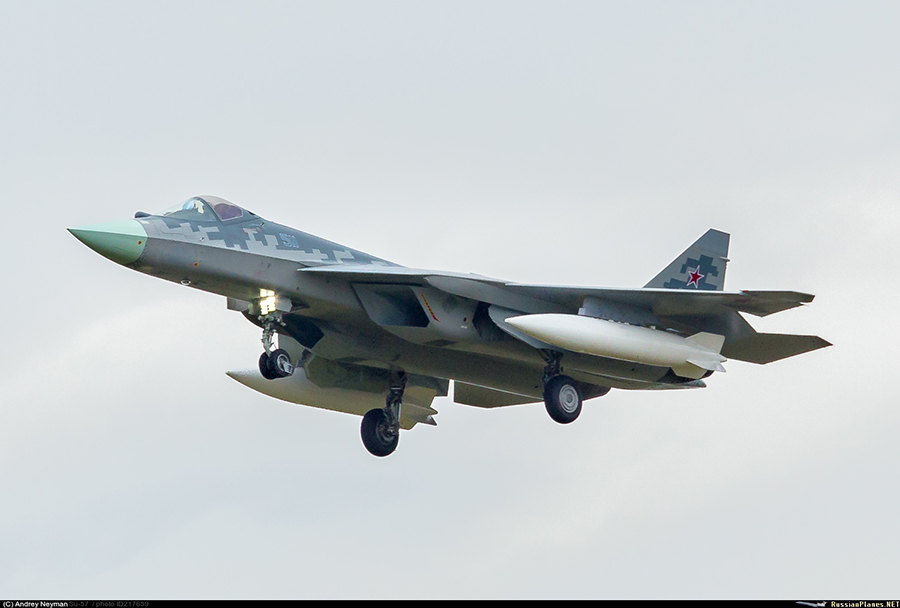
New Photos of Russia’s Sukhoi Su-57 Stealth Jet Show Some Progress of Russian Advanced Fighter Program
New Ninth Example of Russian 5th Generation Sukhoi Su-57 (PAK FA) With Its Enormous Fuel Tanks Spotted at Zhukovsky. Vladimir Zinenko, admin for the
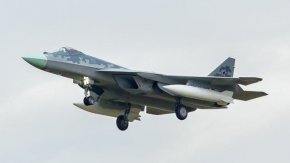
Are these PTB-2000 drop/external fuel tanks? Information about Russian external fuel tanks is almost not available on the internet.
John Fedup
The Bunker Group
This article discusses the the second batch production of Su-57s. Of note, production quality seems to have improved, especially wrt tighter tolerance on fitting components together which should improve stealth somewhat. Although it won’t be as stealthy as jets from the US and China, it will be a big threat to 4th Gen fighters if built in sufficient numbers and its thrust vectoring and side radar panels make it somewhat capable against 5th Gen fighters. Producing and supporting a reasonable number of Su-57s will be a challenge for Russia.
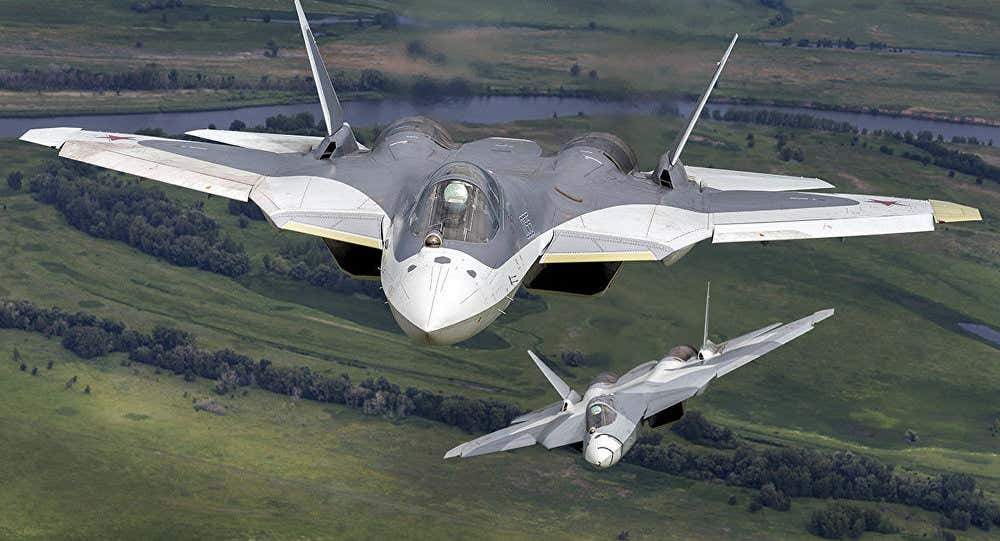
 www.sandboxx.us
www.sandboxx.us

Russia's stealth fighter is finally starting to look dangerous
Russia's long awaited fifth generation stealth fighter, the Sukhoi Su-57 Felon, has seen its fair share of setbacks. The program aimed at bringing
 www.sandboxx.us
www.sandboxx.us
Sandhi Yudha
Well-Known Member
I should not trust too much such blogs.This article discusses the the second batch production of Su-57s. Of note, production quality seems to have improved, especially wrt tighter tolerance on fitting components together which should improve stealth somewhat. Although it won’t be as stealthy as jets from the US and China, it will be a big threat to 4th Gen fighters if built in sufficient numbers and its thrust vectoring and side radar panels make it somewhat capable against 5th Gen fighters. Producing and supporting a reasonable number of Su-57s will be a challenge for Russia.

Russia's stealth fighter is finally starting to look dangerous
Russia's long awaited fifth generation stealth fighter, the Sukhoi Su-57 Felon, has seen its fair share of setbacks. The program aimed at bringingwww.sandboxx.us
It sounds like its written by an engineer specialized in the design of 5th generation stealth fighters.
But unless he saw the blueprints of American, Chinese and Russian stealth fighters, know all the characteristics, performance and capabilities of these fighters, and tested them all in his private RCS-laboratorium, his statements are based on the knowledge of an average human and his fantasy.
He makes a problem about the fact that there is a 9 years gap between first flight and introduction, well thats normal and logic for the development of new jetfighters in the last decades. Most are even longer.
"Alex Hollings is a writer, dad, and Marine veteran that specializes in foreign policy and defense technology analysis"
Sounds cool, but this just shows that his knowledge about aviation and stealth fighter jets does not exceed the level of the average Defencetalk-member.
Last edited:
HeimDefan
New Member
Su-57 is built for agility. It has the widest wingspan out of all the 5th geners. This gives it the smallest turn radius.This article discusses the the second batch production of Su-57s. Of note, production quality seems to have improved, especially wrt tighter tolerance on fitting components together which should improve stealth somewhat. Although it won’t be as stealthy as jets from the US and China, it will be a big threat to 4th Gen fighters if built in sufficient numbers and its thrust vectoring and side radar panels make it somewhat capable against 5th Gen fighters. Producing and supporting a reasonable number of Su-57s will be a challenge for Russia.

Russia's stealth fighter is finally starting to look dangerous
Russia's long awaited fifth generation stealth fighter, the Sukhoi Su-57 Felon, has seen its fair share of setbacks. The program aimed at bringingwww.sandboxx.us
But, if it is truly “stealthy” of all it’s other attributes, why is turn radius so important?Su-57 is built for agility. It has the widest wingspan out of all the 5th geners. This gives it the smallest turn radius.
Close combat should be the mode of last resort.
HeimDefan
New Member
Close combat is still most important. Super Hornet shot AMRAAM at 1970s Su-22 and missed. These days combat jets have such power EW it makes BVR virtually impossible.But, if it is truly “stealthy” of all it’s other attributes, why is turn radius so important?
Close combat should be the mode of last resort.
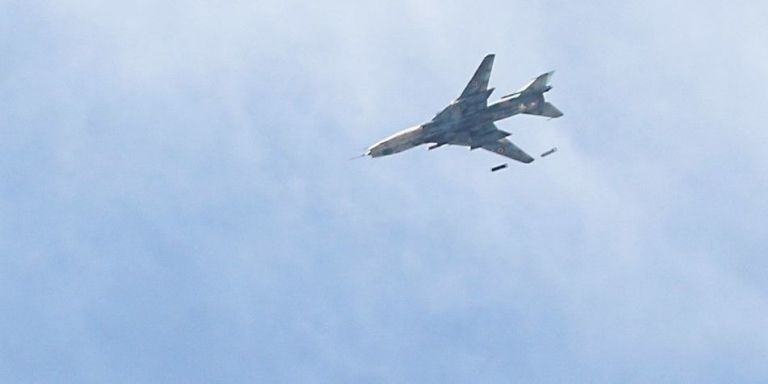
How Did a 30-Year-Old Jet Dodge the Pentagon's Latest Missile?
The AIM-9X Sidewinder failed to bring down an aging attack jet.
How did a 30 year-old Su-22 defeat a modern AIM-9X?
At approximately 18.43hrs local time on June 18, a US Navy F/A-18E Super Hornet operating over Syria shot down a Syrian Arab Air Force (SyAAF) Su-22M4 ‘Fitter’ fighter-bomber near Tabqah, Syria.
HeimDefan
New Member
It is reported the new Tu-160M2 and Tu-22M3M bombers will receive state of the art technologies developed for Su-57.

 nationalinterest.org
nationalinterest.org

Russia's Tu-160M2 and Tu-22M3M Bombers to Get Su-57 Fighter Tech
While the Russian Aerospace Force’s Tu-160 bomber has been flying since the days when President Ronald Reagan occupied the White House and the Berlin Wall was still an imposing barrier, the Cold War-era bomber is getting new modern upgrades. The same improvements will be provided to the Tu-22M3M...
Boagrius
Well-Known Member
This is incorrect. The Super Hornet in question fired an AIM9X, which was likely a dud. No report of flares/IRCM being deployed from those involved in the incident – that idea was dreamed up in the blogosphere by Kyle Mizokami. The subsequent AMRAAM actually hit its target and successfully brought it down.Close combat is still most important. Super Hornet shot AMRAAM at 1970s Su-22 and missed.
I think this claim needs supporting evidence. Widespread global investment in BVR AAMs (AMRAAM, PL12/15/21, R77/77-1/77M, R37M, Meteor, AAM-4B, MICA etc.) and the sensors to support them is not compatible with this view.These days combat jets have such power EW it makes BVR virtually impossible.
Last edited:
HeimDefan
New Member
Why not excel at both BVR and WVR?But, if it is truly “stealthy” of all it’s other attributes, why is turn radius so important?
Close combat should be the mode of last resort.
HeimDefan
New Member
F-22 development took 15 years between YF-22 first flight and F-22A introduction. F-35 development took 15 years between X-35 first flight and F-35B introduction. Su-57 development took 10 years between first flight and introduction is not particularly slow but can be considered fairly slow considering modern design software which are far more capable.I should not trust too much such blogs.
It sounds like its written by an engineer specialized in the design of 5th generation stealth fighters.
But unless he saw the blueprints of American, Chinese and Russian stealth fighters, know all the characteristics, performance and capabilities of these fighters, and tested them all in his private RCS-laboratorium, his statements are based on the knowledge of an average human and his fantasy.
He makes a problem about the fact that there is a 9 years gap between first flight and introduction, well thats normal and logic for the development of new jetfighters in the last decades. Most are even longer.
"Alex Hollings is a writer, dad, and Marine veteran that specializes in foreign policy and defense technology analysis"
Sounds cool, but this just shows that his knowledge about aviation and stealth fighter jets does not exceed the level of the average Defencetalk-member.
HeimDefan
New Member
Su-22 could have been shot down with gunfire alone considering it's an attack plane with no air to air combat capability.This is incorrect. The Super Hornet in question fired an AIM9X, which was likely a dud. No report of flares/IRCM being deployed from those involved in the incident – that idea was dreamed up in the blogosphere by Kyle Mizokami. The subsequent AMRAAM actually hit its target and successfully brought it down.
I think this claim needs supporting evidence. Widespread global investment in BVR AAMs (AMRAAM, PL12/15/21, R77/77-1/77M, R37M, Meteor, AAM-4B, MICA etc.) and the sensors to support them is not compatible with this view.
Boagrius
Well-Known Member
Correct, simply pointing out that this example does not demonstrate that "These days combat jets have such power EW it makes BVR virtually impossible". As I said earlier, I would submit to you that the significant investment we see in weapons like R-77, AMRAAM, Meteor, R37, PL12/15/21 etc indicates that quite the opposite is true.Su-22 could have been shot down with gunfire alone considering it's an attack plane with no air to air combat capability.
HeimDefan
New Member
And of course, Su-57 is no Su-22. So there's no point using Su-22 as an example.Correct, simply pointing out that this example does not demonstrate that "These days combat jets have such power EW it makes BVR virtually impossible". As I said earlier, I would submit to you that the significant investment we see in weapons like R-77, AMRAAM, Meteor, R37, PL12/15/21 etc indicates that quite the opposite is true.

